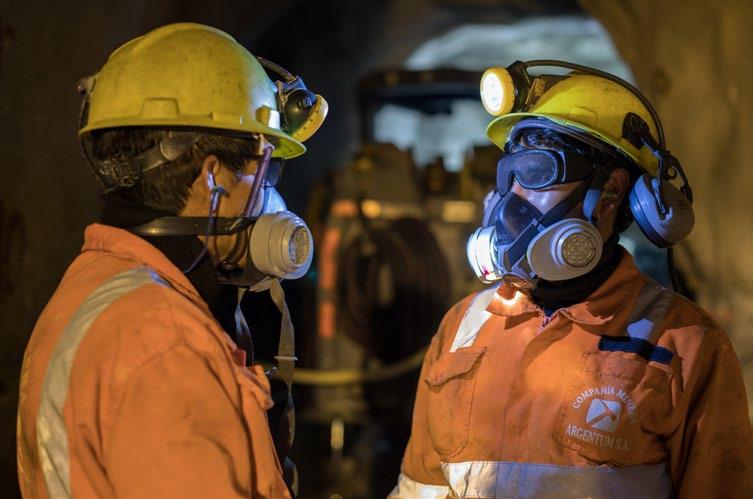
3 minute read
emergency preparedness and crisis management
Our Approach
We classify an emergency as an incident that may result in substantial harm to stakeholders or damage to property. A crisis stems from an incident that may have strategic or organisation-wide impacts. Emergency preparedness and crisis management are essential components of our approach to business continuity and sustainability risk management. We identify company-wide risks, through our quarterly operational risk assessments, which includes the following risk areas: security, political, economic, legal, corruption, environment, social, labour. These assessments assist our Company in taking steps to prevent or minimize the likelihood of events that could result in an emergency or crisis at our operations. In the event that one does occur, we have systems in place to manage it effectively and efficiently.
Systems
• Business Continuity Framework – Our approach to business continuity is designed to help us identify the likelihood of, prepare for, respond to, and recover from an emergency or crisis that could disrupt operations. • Crisis and Communications Management Guidelines – A component of our business continuity framework, these guidelines align with TSM protocols and provide procedures for identifying and managing crises affecting the Company, our workforce, their families, local communities, and/or the surrounding environment. They also lay out a consistent approach to crisis management and crisis communications across our operations.
Programs and Initiatives
• Site-level emergency response plans – Each site has a plan that addresses site-specific risks and lays out response procedures. • Regional head office crisis and communications management guidelines – Each head office has a plan that meets both the corporate and any country-specific requirements. • Training and simulations – Sites provide training on their crisis management plans and run simulations to test emergency preparedness/readiness.
Monitoring and evaluation
• TSM Crisis and Communications Planning Protocol - Sites regularly conduct self-assessments against the protocol and, based on the results, create and implement improvement plans.
Accountability
• Operation emergency response services directly manage an incident.
These services can include rescue teams or medical support personnel from our operations and externally. We are responsible for managing the health and safety of our workforce as well as for managing our impacts on local communities and the environment from incidents outside normal operations.
• Local crisis teams are located in each of our jurisdictions and are responsible for overall management of the response to the crisis at the divisional level. • Special crisis response teams are external organizations identified as essential for the containment or resolution of a crisis event. • The Director of Security and Crisis Management oversees implementation of the Crisis and Communications Management
Guidelines and Business Continuity Framework. • The Corporate Crisis Management Team, led by the COO, is responsible for overseeing crisis management planning and response across the organization.
Our Performance
We are responsible for managing the health and safety of our workforce as well as for managing our impacts on local communities and the environment from incidents outside normal operations. To ensure that we are prepared to respond quickly and appropriately, we have identified a range of potential incidents or events that may manifest in a crisis. These include accidents, fires, spills, security incidents, infrastructure failure, and natural disasters.
Our ability to effectively manage a major incident translates into better protection of the rights and well-being of all stakeholders affected by the incident. In 2019, we focused on improving our crisis management systems by: • Aligning site-level emergency response and crisis management plans with TSM protocols • Training of management teams on emergency preparedness and crisis management • Improving our approach to business continuity by appointing a business continuity champion for each country of operation
Community engagement is another vital component of crisis management. We want our local communities to understand potential threats to their safety and security from any incidents at our operations and our planned responses. Our site-level community teams participate in emergency response and crisis management and, where relevant, work with local emergency services on training and coordination of services.
Next Steps
• Continue to implement the TSM protocol and conduct simulations • Continue to implement our business continuity framework at all operations • Develop a formalized risk management framework and processes
EMERGENCY PREPAREDNESS AND CRISIS MANAGEMENT AT PAN AMERICAN SILVER
PRESIDENT & CEO
BOARD OF DIRECTORS
CORPORATE CRISIS TEAM CHAIR (COO)
CORPORATE CRISIS MANAGEMENT TEAM
LOCAL EMERGENCY MANAGEMENT TEAM SPECIAL CRISIS RESPONSE TEAM
OPERATION EMERGENCY RESPONSE SERVICES







